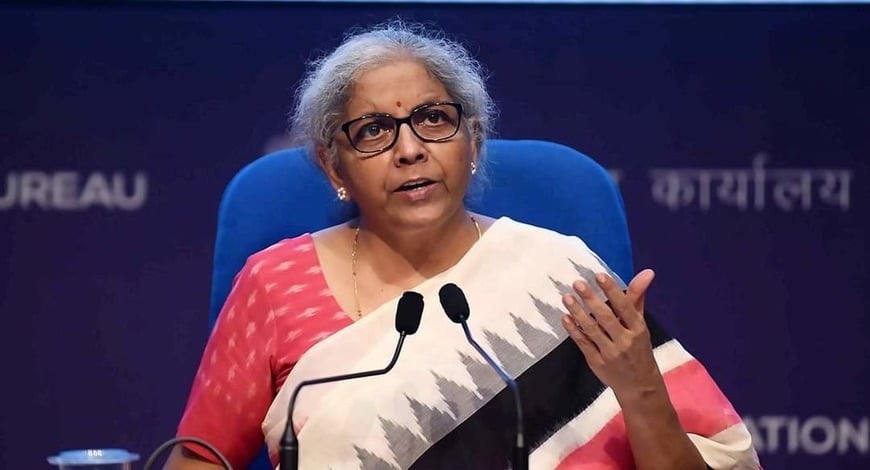It is evident now that economic growth is slowing appreciably around the world. While this is widely acknowledged by now, one suspects the extent of the eventual slowdown is still not. There seems to be momentum to the slowdown given the context of more restrictive fiscal policy now and the fact that central banks will widely keep monetary conditions tighter for longer.
While China is loosening policy on the margin, there are multiple constraints here both on the quantum of easing possible and the net effect of the same. Thus the only (temporary) respite to the downward momentum to global growth could potentially be from a possible cessation of war and a consequent sharp correction in energy prices (this is mentioned as a possible scenario here and not a view).
Barring that, one would expect the higher momentum data slowdown to eventually feed into the ‘stickier’ parts of the world economy. As one example of this, concurrent data on US housing sales has turned down significantly. Signs that this is percolating into new construction are very much there.
One would think it a matter of time that the housing slowdown starts showing up in house prices and from there as a negative wealth effect for consumers. This in turn may weigh further on discretionary consumption (including for services) which is already slowing. The construction slowdown alongside the ongoing manufacturing weakness would show eventually in the labour market and from there into wages.
The last of these is the slowest moving piece in the chain just described. However this is precisely the shoe the Fed is waiting to see drop, and that is the reason that policy rates will have to be held higher for longer. An implication of this also is that while sovereign rates may already have done the heavy-lifting, corporate bond spreads in developed markets (DMs) appear way too sanguine given the macro context described here.
One can think about India’s own growth momentum in context of slowdown spreading to stickier parts of the world. We have two distinct advantages going for us. One, a long period issue on local corporate and bank balance sheets is now behind us. This has been a significant cyclical drag over the past many years which has now turned into a tailwind.
Two, India’s total monetary and fiscal policy response to Covid has been measured and responsible. This implies that there is very little overhang to deal with of excess stimulus from the past unlike in the case of many developed economies. This is also the main reason behind our view that India needn’t follow the US lockstep in monetary tightening and that we can afford for our effective overnight rate to peak below 6 per cent in this cycle.
Returning to point, however, the cycle and policy tailwinds are ensuring that we now grow more robustly than many other nations around the world. The relative growth advantage will likely sustain going forward.
However, the absolute growth acceleration that we have witnessed over the past few months will have to slow reflecting the weakening global growth. This starts through the export channel, as it already has, and then proceeds to impact local consumption and investments down the line.
Stabler rate hike expectations in DMs from here
Global rate hike expectations were in constant iteration mode (read being continually revised upwards) for most of this year till mid-June. Post that things took a breather. For a while as signs of economic breakage started to become clearer, markets began running somewhat ahead of themselves by not just lowering their terminal rate forecasts but in some cases even building significant rate cuts for late 2023 in some developed markets. As an example, around mid-July approximately 80 bps rate cuts were being priced in for the US next year.
Over the past few weeks, on the back of active central bank pushes against this idea helped with continued upward pressure on European inflation, ‘sense’ seems to have returned. This has been evidenced in both terminal rate pricing going up as well as an expectation now that they will be at higher levels for longer.
This is now more consistent with the message delivered, as an example, by Fed Chair Powell in his recent Jackson Hole speech. In Europe, policy tightening expectations had built in significantly till mid-June but then unwound appreciably on the back of weaker economic data.
However, with inflation concerns going up further and with ECB seemingly showing firm resolve to contain it, rate hike expectations have sharply risen again. These gyrations are best reflected in the movement of German 2-year bond yields over the past few months. The UK has also seen very sharp recent additions to rate hike expectations from the market.
Given all of the recent building back of rate hike expectations, and with clear signs of economic breakage becoming more pronounced, it is unlikely that incoming data leads to more than, say, a 25 bps upward change in expectations from the current levels in most major DMs. Pricing is already for peak rates in this cycle being significantly higher than what are termed as long term neutral rates and thus incoming data needs to very sharply surprise for this to move even higher by a significant step.
Turning home, rate hike expectations with respect to RBI seem to also now be stabilising. To recap, these expectations had become quite unanchored post the inter-meeting hike in May. While we had held on to our view of peak effective rates in this cycle at sub-6 per cent (basis our reading of the current global macro cycle as well as India’s total, relatively modest, post Covid policy response), market pricing was far in excess of this at ‘peak fear’ after the May event.
However, now here as well market seems to be converging towards a peak repo rate of 6-6.25 per cent which is much closer to what we have been thinking. Our view of peak effective overnight rate of 5.75 per cent is consistent with a terminal repo of 6 per cent with overnight rates round the SDF, 25 bps below.
Tighter global financial conditions & possible implications
While DM sovereign rates may be more range bound from here, this doesn’t mean that we are done with tightening in global financial conditions. As rates stay tighter for longer in the face of economic breakage, this may get evidenced more in the usual risk off trades like stronger DM currencies and wider corporate bond spreads (DM corporate bond spreads are still relatively well behaved and seem to have significant room to expand).
Many emerging market (EM) bond yields are also like ‘spread’ assets for global capital. Thus a tighter for longer policy environment in DMs will entail stricter financial conditions and hence a widening of spreads. This may impact yields in many EMs as well.
Over the first half of the year when the world was readjusting its expectation of global monetary tightening, the linkage to Indian bonds was largely through interest rate swaps rather than outright bond selling by foreign investors in a big way.
Most of the capital outflows were instead from the equities markets. This probably reflects the fact that active foreign interest has been missing from Indian bonds over the past few years and hence the amount of rebalancing out may also consequently be lower. Portfolio rebalancing on possible another bout of risk aversion ahead may not impact India’s bonds significantly.
Also with spread between bond and swap having opened up (5 year government bond yields were around 60 bps over 5 year swap yields at the time of writing), there is room for this to compress without significantly impacting underlying bond yields.
However, this doesn’t mean that local bonds are immune to global financial conditions tightening. This needs to be still respected, in our view. As an example, lately the local bond market is abuzz with expectations that India is on the cusp of being included in at least one of the large global sovereign bond indices.
The argument heard is that this time around this is on ‘pull’ from investors desiring some diversification to their EM exposures. Hence it may go through even without associated facilitators that required leeway on taxation which apparently our policymakers were against.
The expectation is that the while flows associated with actual index inclusion may take some time, and the weight assigned to Indian bonds in the index itself would only gradually go up, other ‘fast money’ flow may pre-empt this and already start coming in.
Basis this expectation, one has seen a bull flattening over the past few sessions thereby further flattening the 5 to 10 year yield spread, as local participants have taken positions in longer duration bonds anticipating this announcement.
We have no idea how far this can stretch in the near term. However, nothing changes to our underlying view that if there’s one point of concern that bond markets ought to have over the medium term, it is the amount of duration supply.
This is both on account of higher than pre-pandemic averages on likely fiscal deficit over the next few years as well as a shift higher in annual bond maturities over the next many years from what was the case in the past.
Even adjusted for nominal growth in participant balance sheets, this is a significant step up in duration supply and likely needs support from a demand standpoint. Absent offshore investors, RBI would have eventually stepped in to buy bonds as a means to expand its balance sheet.
With index inclusion, offshore investors will buy bonds and RBI will get the dollars to expand balance sheet. Then RBI wouldn’t need to buy bonds. Either way, over the medium term, the eventual effect on bond yields may be similar.
Thus the issue of duration absorption may still persist after the initial euphoria on index inclusion subsides. Also this would be in what is a tighter global financing environment. In India too even as our peak rate expectations are in place, we would expect RBI to hold them there for longer.
Thus, investors should continue to want higher risk premia from yields for holding higher duration over the medium term. Also given how unforgiving the global environment is, we don’t want to be too ‘tactical’ with our portfolio strategies by trying to chase the bull flattening. All told then, we continue to find the most value in 4 -5 year government bonds.
(The author is Head-Fixed Income at IDFC AMC.)


 Opinion2 years ago
Opinion2 years ago
 Entertainment7 years ago
Entertainment7 years ago
 Fashion7 years ago
Fashion7 years ago
 Entertainment7 years ago
Entertainment7 years ago
 Opinion2 years ago
Opinion2 years ago
 Politics7 years ago
Politics7 years ago
 Entertainment7 years ago
Entertainment7 years ago
 Entertainment7 years ago
Entertainment7 years ago









